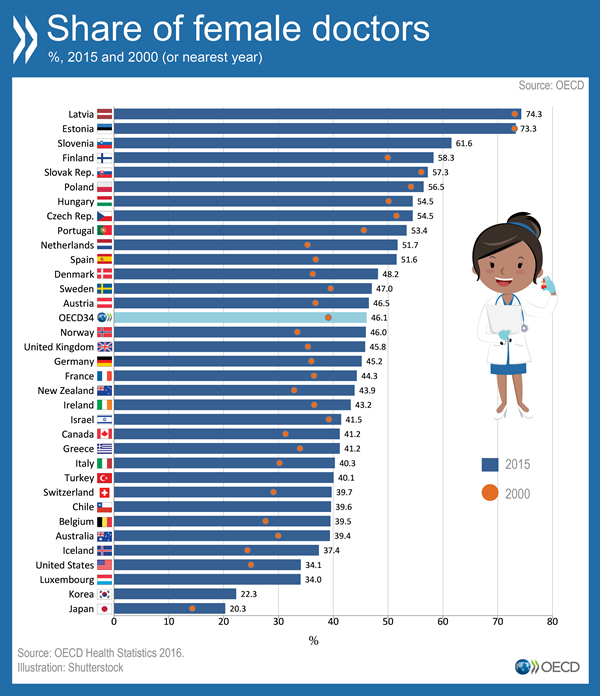Women make up most of the health sector workers but they are under-represented in high-skilled jobs
March 2017 - The current overall health workforce is mostly composed of women. Nonetheless, female health workers remain underrepresented in highly skilled occupations, such as in surgery. As of 2015, just under half of all doctors are women across OECD countries on average. The variation across countries is significant: in Japan and Korea only around 20% of doctors are women, in Latvia and Estonia this proportion is over 70%.
The gender composition of doctors is however changing. The share of female doctors has been increasing for the last fifteen years in all OECD countries. On average, the share of female doctors was 29% in 1990. This proportion grew to 38% in 2000 and 46% by 2015 (Figure 1). This upward trend is expected to continue in future as the share of female graduates continues to increase.
|
|
|
Source: OECD Health Statistics 2023 |
Evidence from countries such as France and Canada suggests that the share of female doctors tends to be greater in general medicine than in higher paying, more specialized occupations, such as surgery. In 2014, for a majority of selected OECD countries, remuneration of specialists was higher than that of generalists (Figure 2).These figures suggest that even when female workers pursue higher skilled professions in the medical profession, they tend to be under represented in the jobs with the highest earnings.
Further reading
Related Documents


